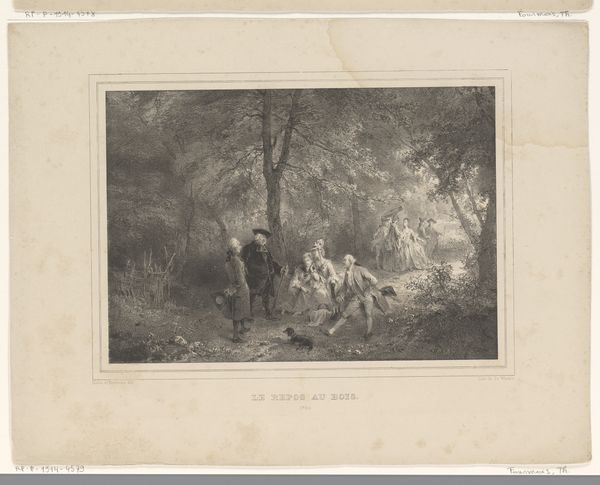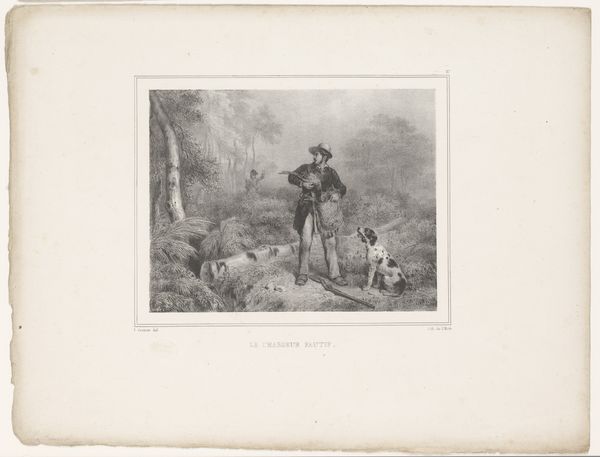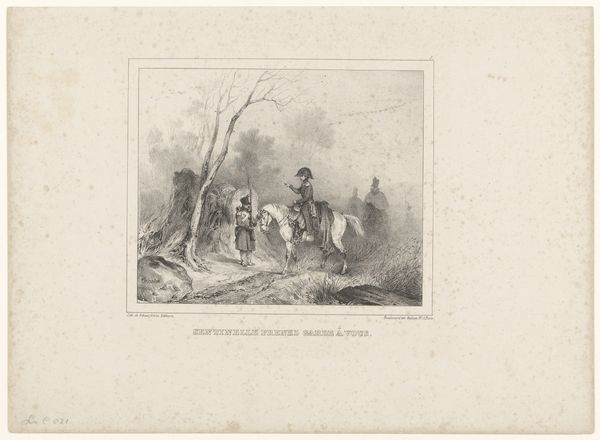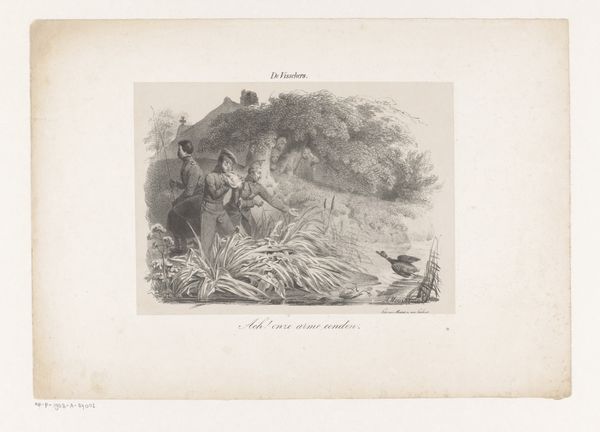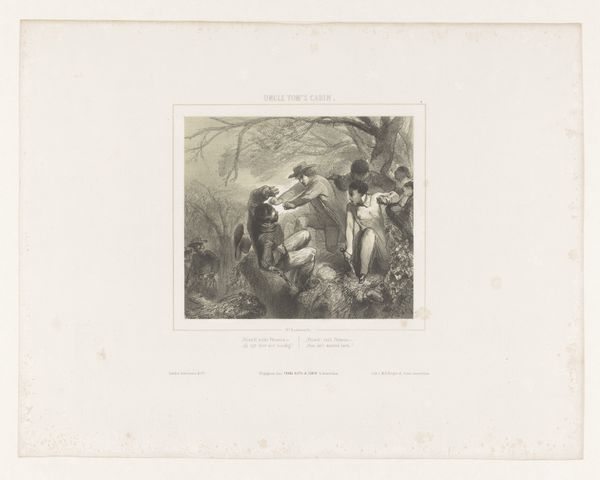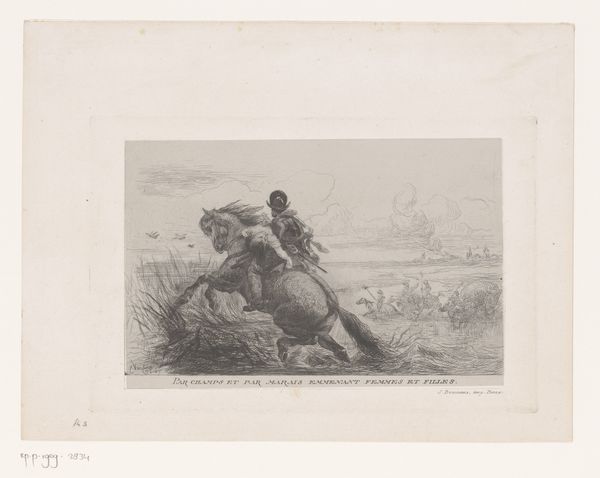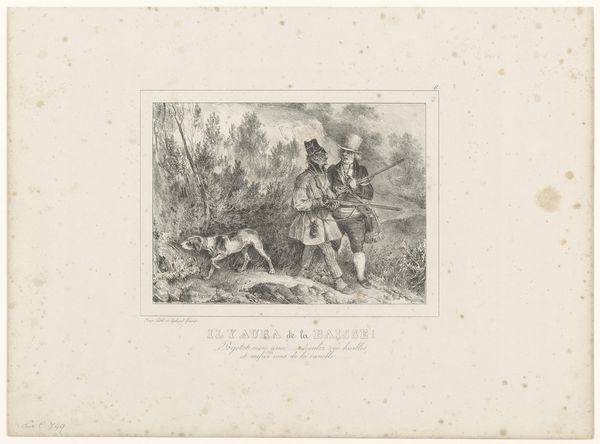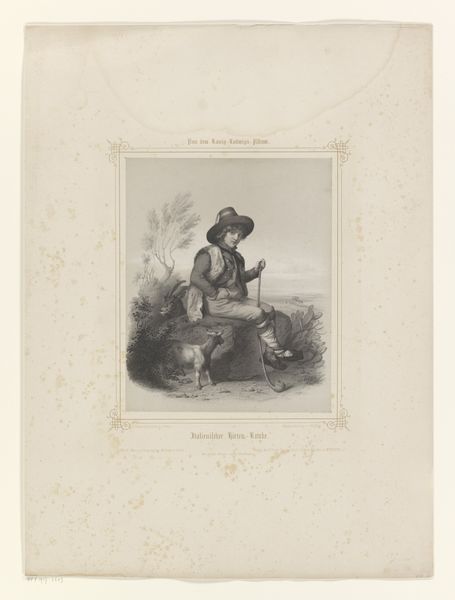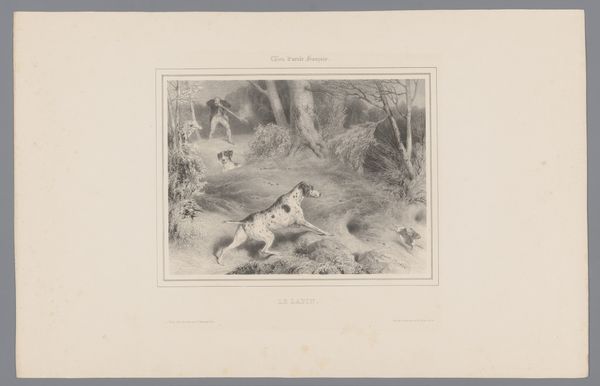
drawing, print, engraving
#
drawing
# print
#
pencil sketch
#
old engraving style
#
landscape
#
figuration
#
romanticism
#
engraving
Dimensions: height 277 mm, width 364 mm
Copyright: Rijks Museum: Open Domain
Editor: This is "Jachtopziener met drie jachthonden," or "Game Warden with Three Hunting Dogs," by François Grenier, made between 1819 and 1836. It’s an engraving, which gives it this amazing detailed, almost photographic quality. What strikes me is how staged it seems – almost like a portrait but of a working man in his environment. What do you see when you look at this piece? Curator: It's fascinating how Grenier is operating within, and perhaps subtly commenting on, existing social structures. Hunting in the early 19th century was heavily regulated and tied to land ownership, essentially a privilege of the aristocracy and gentry. So, to depict a 'game warden' is to depict someone whose job it is to *enforce* those social hierarchies related to access to land and hunting game. The print, therefore, is not just a pastoral scene. Consider how its public availability through prints democratizes access to the image itself, even as the image portrays social limitations on who can hunt. Editor: That makes me think about the dogs, too. They’re not just pets; they're tools within that system. Were hunting scenes popular subjects because of these social structures, or in spite of them? Curator: It's both. There was definitely a market for these scenes among the land-owning class who saw them as reflections of their own status and pastimes, legitimizing their dominance. However, the popularity across wider society might also stem from a certain aspirational desire or even a critical engagement with that same power. The Romantics were often drawn to rural subjects but that wasn't always an uncritical viewpoint. Do you find any traces of commentary by the artist on these relationships? Editor: Now that you point that out, I notice a certain stoicism in the warden’s posture that maybe suggests a different narrative beyond the surface level… I appreciate how it’s not just about what's in the picture, but *who* gets to be in the picture, and *why.* Curator: Exactly. Seeing it as more than a simple representation of rural life changes how we understand its role in visual culture and society.
Comments
No comments
Be the first to comment and join the conversation on the ultimate creative platform.
